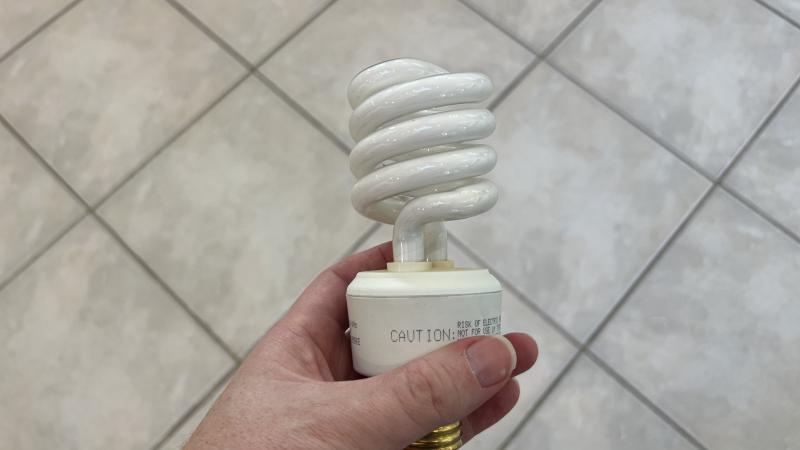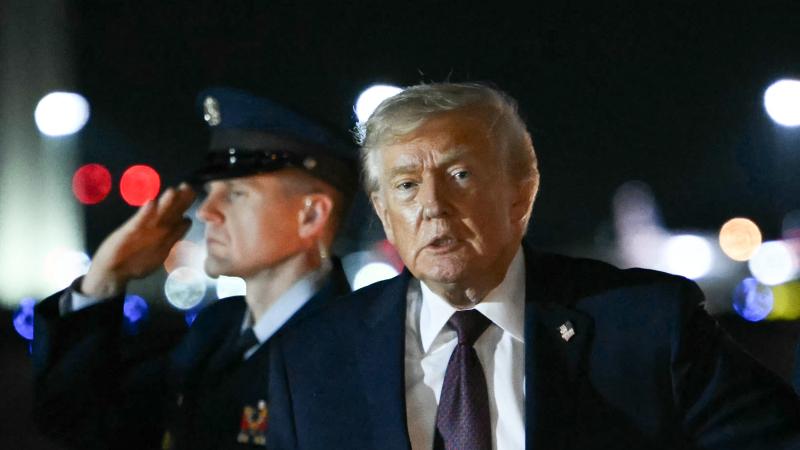Energy Secretary says energy stockpiles to be refilled in 2024, but experts are skeptical
President Joe Biden drained the Strategic Petroleum Reserve to push gasoline prices down ahead of the midterm elections. With gasoline prices on the rise and another election on the horizon, plans to replenish the SPR might not pan out.
Energy Secretary Jennifer Granholm said Monday that the nation’s energy stockpiles, which President Joe Biden depleted to its lowest level since the 1980s, will be refilled by the end of 2024.
“By the end of this year we will essentially be back to where we would have been absent the sales,” Granholm said at the CERAWeek energy conference in Houston, Texas, according to AFP.
Robert Rapier, an energy expert and editor in chief of Shale Magazine, told Just The News there’s good cause to be skeptical. Election-year politics, he said, will limit efforts to replenish the Strategic Petroleum Reserve (SPR), as the stockpiles are called. “They’re not going to refill more than 10% of the SPR this year, because they’ll drive prices back up in an election year,” Rapier said.
Taxpayer costs
The SPR was created in response to the 1973 OPEC oil embargo against the United States, which triggered an energy crisis and caused a recession. President Gerald Ford signed the Energy Policy and Conservation Act of 1975, which created the SPR to provide a stockpile of energy supplies should the nation need it. These crude oil reserves are stored in 60 salt caverns that are 200 feet wide and over 2,500 deep in the ground.
The reserves have been tapped for a variety of reasons over the years, and some of the oil was released for exchange agreements, which function like a loan. The loan is given in barrels of oil, and those barrels are repaid at a specific date with interest.
The main purpose of the SPR was as an emergency response tool the president could use in the face of an economically threatening disruption in oil supplies, but Rapier said presidents have often used it to mitigate oil prices.
In June 2022, the average retail price of gasoline in the U.S. was nearly $4.30 per gallon. With the midterms approaching, the high cost of gas threatened to push more voters toward Republican candidates. In an effort to bring those prices down, Biden began tapping the SPR.
Prior to the announcement of the sale in March 2022, the reserve held 565 million barrels, according to the Energy Information Administration. It dropped below 370 million barrels by July 2023.
The DOE has been buying back about 3 million barrels per month, and at the end of February the department had purchased 23.08 million barrels at an average price of $76.34 per barrel. The DOE also expedited the payback of nearly 4 million barrels from loans to oil companies.
The oil was sold, according to the DOE, at $95 per barrel. The Biden administration has boasted that replenishing the SPR at a target price of $79 per barrel represents a good deal for taxpayers.
Tim Stewart, president of the U.S. Oil and Gas Association, told Just The News in January that the historic prices for the oil that was in the SPR were closer to $30 per barrel, which means the replenishing represents a cost to taxpayers.
He also said the SPR has a long way to go before it gets back to where it was, and there is no certainty producers will meet the $79 per barrel target price the DOE wants for the entire amount it needs to buy.
On Tuesday afternoon, U.S. crude futures on the West Texas Intermediate, the primary U.S. benchmark, were going for $83.48.
Gasoline prices
As summer approaches, refineries begin producing summer blends of gasoline. In winter, gasoline blends have a higher Reid vapor pressure, and they evaporate more easily allowing cars to start in cold weather. Summer blends reduce emissions when the easier evaporation won’t cause problems.
Summer blends take longer to produce and the overall yield per barrel is lower, reducing supply. As a result, prices increase. When the refineries switch back in winter, prices fall again.
“People always think it’s a conspiracy. But I say look at non-election years. They fall every year because of the change over,” Rapier said.
Rapier added that Biden has painted himself into a corner this year by so dramatically depleting the SPR for the midterms. Rapier said he believes Saudi Arabia and Russia would rather see Trump elected, so they’re cutting production.
“And if those production cuts start to bite…there’s really not a whole lot of insurance policy now in the Strategic Petroleum Reserve to be able to combat that,” Rapier said. Besides leaving fewer options for energy prices, he said, it also leaves the U.S. more vulnerable to any emergencies that disrupt oil supplies.
The U.S. has been the leading producer of oil in the world for six years now, but most of the oil coming from American wells is light, sweet crude. American refiners are instead tooled for heavy, sour crude. As a result, Rapier explained, the U.S. is still a net importer, and those imports are used to make finished products, such as gasoline and diesel.
He said this mismatch between the U.S. refineries and the type of oil produced is why the invasion of Ukraine sent gas prices so high in the summer of 2022. There was a severe disruption in the imports the refineries depend on.
“So that’s what can happen. You can see a disruption where, yeah, the reserves are probably not as important as they used to be because of all the oil we’re producing. But we still import a lot of oil. It would cause a big refinery disruption,” Rapier explained.
According to Reuters, the DOE expects to buy 40 million barrels by the end of 2024, and another 140 million barrels that would have been drained by 2027 will stay in the SPR due to the cancellation in 2022 of congressionally mandated sales.
Should that plan play out as the DOE hopes, it will still take 40 million barrels of oil off the market, which will impact prices.
Reports suggest the president is concerned about his chances in the November election, so rather than risk riding out the election with higher energy prices, he may cancel the SPR refill plan until next year.
The Facts Inside Our Reporter's Notebook
Links
- lowest level since the 1980s
- according to AFP
- Shale Magazine
- created in response to the 1973 OPEC oil embargo
- variety of reasons over the years
- Biden began tapping the SPR
- according to the Energy Information Administration
- the department had purchased 23.08 million barrels
- told Just The News in January
- the primary U.S. benchmark
- going for $83.48
- begin producing summer blends
- higher Reid vapor pressure
- leading producer of oil in the world for six years now
- light, sweet crude
- heavy, sour crude
- still a net importer
- According to Reuters
- Reports suggest the president is concerned
















